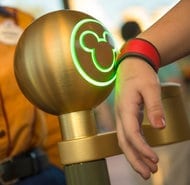
This vision of a nearly sentient and automated marketing world (dramatically visualized in the film Minority Report) is one of the future scenarios that increasingly data-centric organizations of all sizes imagine these days.
When you hear the buzzword “big data” – what do you really think it means?
Rarely has a single term caused so much excitement in business, and concern from citizens wary of losing more privacy controls on their own information. And the more times we hear that 2013 will be the “year of big data” – the more confusing it might seem. Big data is largely misunderstood.
If you consider most of the definitions written by experts, the term “big data” is usually used to describe one of three things:
- The analytic solutions offered by enterprise software and technology firms.
- The high volume of data being collected in minute detail on consumer behaviour online and offline.
- The ability to bring previously separate data sets together to generate new world changing insights.
No wonder there is so much confusion. Several months ago, an article in the NY Times pointed to an interesting conclusion when it came to the value of big data. It was titled, “Big Data Is Great, But Don’t Forget Intuition.” One of the interesting points it raised was that simply having more access to data or the newfound technical ability to merge it together in unexpected ways was never going to be enough to improve businesses or change anything.

Together, these two articles offer the perfect vision of both the promise and pitfalls of big data. The ability to collect information has to be paired with the intuition to understand what the data is really telling you. In other words – big data will shape up to be pretty useless without some big thinking from people with the intuition to make sense of it.
So how do you put these two needs together to collect the right data, and then transform it into usable and actionable insights? Here are three keys to realizing the promise of big data:
- Personalization. This the “Buzz Lightyear knows your name” model that Disney is focused on driving with their MagicBand. More data used in real time to improve guest experiences and give them an even more memorable visit to Disney Parks. This focus on personalization is the ultimate double edged sword … the more information you collect about your customers, the greater expectation they have for you to customize their experience and always know who they are and what they have already told you.
- Optimization. In most marketing organizations, there is significant wastage of resources and budget. This may come from investing in marketing efforts that are not working or are not being tracked properly, or from duplication of efforts or inefficient systems in place. Big data can offer insights into how to optimize what you are already doing to save money, improve results and even add more simplicity to the current programs.
- Innovation. The most forward looking potential benefit from big data is to open up insights into new markets or opportunities that you can’t currently see. Innovation sometimes comes from accidental “post-it” style inventions … but more often in the future it may come from using data to see around blind corners, anticipate new consumer demands and open new markets.







WE RECENTLY REMOVED COMMENTING - LEARN WHY HERE >